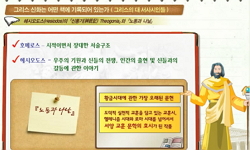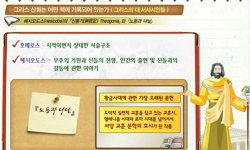본고는 김승옥 소설에 드러난 인간의 본질을 ‘분열성’으로 정의하고 탐구를 시도하였다. 특히 라캉 정신분석학의 ‘죽음충동’이라는 개념에 착안하여 죽음충동을 매개로 분열하고 있는...
http://chineseinput.net/에서 pinyin(병음)방식으로 중국어를 변환할 수 있습니다.
변환된 중국어를 복사하여 사용하시면 됩니다.
- 中文 을 입력하시려면 zhongwen을 입력하시고 space를누르시면됩니다.
- 北京 을 입력하시려면 beijing을 입력하시고 space를 누르시면 됩니다.

김승옥 소설의 분열적 인간성 -죽음충동을 중심으로- = Kim Seung-ok’s novel’s Divisive Humanity -Focusing on Death Impulse.
한글로보기부가정보
국문 초록 (Abstract)
이를 위해 먼저 2절에서는 각 작품에 드러난 죽음충동의 양상들을 추적해보았다. 김승옥적 주체들은 ‘극기’를 통해 상징계라는 하나의 세계를 형성하면서 ‘지나치게 많은 생명’으로서의 순수한 악, 죽음충동의 행위를 저항적으로 분출한다. 이러한 생명의 충동은 상징계적 주체들에게 증상으로서, 동물과 여성의 형상으로서 무두적으로 지속된다. 상징계의 ‘힘’의 논리, 폭력성과 거짓, 속물성을 혐오하고 귀여운 토끼와 새끼염소를 사랑하면서도, 주체는 분열의 진공 상태에 스스로 몸을 담근다. 성장한다는 것, 타자들의 세계, 서울에서 살아갈 수밖에 없음을 씁쓸하게 인정하며 지옥 같은 타인들의 틈에 들어서지 않을 수 없는 인간 실존의 본성을 지적한다. 이것은 속물성에 대한 어쩔 수 없다는 긍정이 아니라 타자들의 세계로 진입하지 않을 수 없는 인간의 존재론적 성질에 관한 김승옥의 통찰이다.
3절에서는 이러한 이율배반적 위치에 관한 인간의 분열성을 집중적으로 살펴보려고 시도하였다. 김승옥은 분열성의 간극, 사이의 공간에서 발생하는 죽음충동의 생명과 자유, 사랑, 혁명을 형상화한다. 죽음충동의 생명성을 보유하면서도 생존해야 한다는 인간적 ‘본능’을 가진 주체들의 양상은 선과 악이라는 상징계적 도덕을 넘어선 여성 인물들에게 적극적으로 투영되고 있다. 여기서 도덕과 윤리의 구분은 중요하다. 도덕을 넘어서는 윤리는 오히려 타인들에 대한 도덕을 깊게 체화한 주체에게서나 기대될 수 있는 것이기 때문이다. 즉 타인에게 피해와 상처를 주지 않으려는 상징계적 도덕은 그로 인한 나르시시즘적 이익, 대타자에게 선하게 보임으로써 획득되는 사회적, 정념적 이해관계에서 자유롭지 못하다. 이러한 방식으로 상징계적 상블랑을 학습한 인물들은 오히려 위선적, 이데올로기적이다. 그러나 타인에 대한 예의, 배려, 도덕을 깊은 ‘사랑’이라는 윤리적 자세로 수용한 인물들은 도덕과 윤리가 상충하는 순간 윤리를 지향하는 위악의 행위를 도맡는다. 라캉에게 윤리가 실재계에 속한다는 점을 주지할 때 김승옥의 생명은 바로 이 위악성으로, 부자유하게 평온한 양옥집을 부수는 ‘악마’로 출력되고 있음을 알 수 있다. 인간의 분열성은 실재계로의, 진정한 윤리로의 지향성으로 열리는 자유의 상처인 것이다.
4절에서는 김승옥이 남성과 여성의 라캉적 성...
본고는 김승옥 소설에 드러난 인간의 본질을 ‘분열성’으로 정의하고 탐구를 시도하였다. 특히 라캉 정신분석학의 ‘죽음충동’이라는 개념에 착안하여 죽음충동을 매개로 분열하고 있는 인간의 순수성을 ‘자기세계’의 개념으로 도출하였다. 김승옥의 ‘자기세계’는 수많은 연구의 대상이 되어왔으나 그 애매모호한 성격, ‘악’의 냄새와 광기의 몸짓이 새로운 감수성의 색채로 덧칠되어 있는 탓에 명확하게 의미화되지 못했다. 본고는 이 연구사의 교착상태를 풀어낼 해결책으로 라캉 정신분석학의 ‘실재계’, 그 중에서도 ‘충동’의 ‘생명성’을 제출하는 바이다. 시대를 외면하고 개인주의에만 함몰되어 있다는 일각의 시선과는 다르게, 본고는 그가 1960년대의 시대성을 충실히 구현해내고 있음과 더불어 1960년대를 넘어 현시대에도 여전히 진리를 전달할 사도의 역할을 할 수 있음을 제시해보이고자 한다. 그는 무기력한 전후문학에 생명의 고동을 부여하고자 했던 혁명적인 소설가이기 때문이다.
이를 위해 먼저 2절에서는 각 작품에 드러난 죽음충동의 양상들을 추적해보았다. 김승옥적 주체들은 ‘극기’를 통해 상징계라는 하나의 세계를 형성하면서 ‘지나치게 많은 생명’으로서의 순수한 악, 죽음충동의 행위를 저항적으로 분출한다. 이러한 생명의 충동은 상징계적 주체들에게 증상으로서, 동물과 여성의 형상으로서 무두적으로 지속된다. 상징계의 ‘힘’의 논리, 폭력성과 거짓, 속물성을 혐오하고 귀여운 토끼와 새끼염소를 사랑하면서도, 주체는 분열의 진공 상태에 스스로 몸을 담근다. 성장한다는 것, 타자들의 세계, 서울에서 살아갈 수밖에 없음을 씁쓸하게 인정하며 지옥 같은 타인들의 틈에 들어서지 않을 수 없는 인간 실존의 본성을 지적한다. 이것은 속물성에 대한 어쩔 수 없다는 긍정이 아니라 타자들의 세계로 진입하지 않을 수 없는 인간의 존재론적 성질에 관한 김승옥의 통찰이다.
3절에서는 이러한 이율배반적 위치에 관한 인간의 분열성을 집중적으로 살펴보려고 시도하였다. 김승옥은 분열성의 간극, 사이의 공간에서 발생하는 죽음충동의 생명과 자유, 사랑, 혁명을 형상화한다. 죽음충동의 생명성을 보유하면서도 생존해야 한다는 인간적 ‘본능’을 가진 주체들의 양상은 선과 악이라는 상징계적 도덕을 넘어선 여성 인물들에게 적극적으로 투영되고 있다. 여기서 도덕과 윤리의 구분은 중요하다. 도덕을 넘어서는 윤리는 오히려 타인들에 대한 도덕을 깊게 체화한 주체에게서나 기대될 수 있는 것이기 때문이다. 즉 타인에게 피해와 상처를 주지 않으려는 상징계적 도덕은 그로 인한 나르시시즘적 이익, 대타자에게 선하게 보임으로써 획득되는 사회적, 정념적 이해관계에서 자유롭지 못하다. 이러한 방식으로 상징계적 상블랑을 학습한 인물들은 오히려 위선적, 이데올로기적이다. 그러나 타인에 대한 예의, 배려, 도덕을 깊은 ‘사랑’이라는 윤리적 자세로 수용한 인물들은 도덕과 윤리가 상충하는 순간 윤리를 지향하는 위악의 행위를 도맡는다. 라캉에게 윤리가 실재계에 속한다는 점을 주지할 때 김승옥의 생명은 바로 이 위악성으로, 부자유하게 평온한 양옥집을 부수는 ‘악마’로 출력되고 있음을 알 수 있다. 인간의 분열성은 실재계로의, 진정한 윤리로의 지향성으로 열리는 자유의 상처인 것이다.
4절에서는 김승옥이 남성과 여성의 라캉적 성...
다국어 초록 (Multilingual Abstract)
To this end, in Section 2, the aspects of death impulse revealed in each work were first traced. Kim Seung-ok’s subjects form a world called the symbolic world through ‘the extreme’ and resistively erupt the pure evil and death impulse as ‘excessive life’. These impulses of life persist in the form of animals and women as a symptom to the symbolic subjects. While abhorring the logic, violence and lies, snobbery of the symbolic world, and loving the cute rabbit and baby goat, the subject immerses himself in a vacuum of division. He bitterly acknowledges that he has no choice but to grow up, the world of others, and points out the nature of human existence that is forced to enter the gap of others like hell. This is not an affirmation that he cannot help but enter the world of snobbery, but Kim Seung-ok’s insight into the ontological nature of humans who are forced to enter the world of others.
Section 3 attempted to intensively examine the division of human beings regarding this antinomic position. Kim Seung-ok embodies the life, freedom, love, and revolution of the death impulse that occurs in the space between the gaps of division. The aspects of subjects with the human ‘instinct’ that they must survive while retaining the vitality of the death impulse are actively projected to female characters beyond the symbolic morality of good and evil. Here, the distinction between morality and ethics is important. This is because ethics beyond morality can only be expected from subjects who deeply embody morality toward others. In other words, symbolic morality that does not damage or hurt others is not free from the narcissistic interests and social and passionate interests obtained by being good to others. The characters who have learned the symbolic Sangblanc in this way are rather hypocritical and ideological. However, characters who accept courtesy, consideration, and morality toward others with an ethical attitude of deep ‘love’ are in charge of evil actions aimed at ethics at the moment when morality and ethics conflict. When Lacan is aware that ethics belongs to the real world, it can be seen that Kim Seung-ok’s life is printed as a ‘devil’ who breaks down the unnaturally calm Yangok House. Human division is a wound of freedom that opens up with a direction toward the real world and true ethics.
In Section 4, we focused on the part where Kim Seung-ok attempted Hegelian reconciliation by seeing the Lacan gender difference between men and women as a matter of ‘enemy’. This is also referred to as a Buddhist spirit through a conversation with Ha In-sook in “Mujin Travel”. This is because humans who dream of a kingdom that is absent like a Kantian object itself and a mirage but cannot be given up are a ‘life’ that is subordinate to the ‘date’ beyond the gender difference between women and men. This vitality triggers the impulse of love b...
This paper defined the human nature revealed in Kim Seung-ok’s novel as ‘divisionality’ and attempted to explore. In particular, based on the concept of ‘death impulse’ in Lacan psychoanalysis, the purity of human beings divided through deat...
This paper defined the human nature revealed in Kim Seung-ok’s novel as ‘divisionality’ and attempted to explore. In particular, based on the concept of ‘death impulse’ in Lacan psychoanalysis, the purity of human beings divided through death impulse was derived as the concept of ‘self-world‘. Kim Seung-ok’s ‘self-world’ has been the subject of numerous studies, but its ambiguous character, smell of ‘evil’, and gestures of madness were painted over with new sensitivity. This paper presents the ‘real world’ of Lacan psychoanalysis, especially the ‘life’ of ‘impulse’, as a solution to solve the deadlock of this research. Contrary to the view of some that he is ignoring the times and is only immersed in individualism, this paper aims to suggest that he is faithfully embodying the times of the 1960s and that he can still play the role of an apostle who will convey the truth in the present era beyond the 1960s. This is because he is a revolutionary novelist who tried to give life a beating to helpless postwar literature.
To this end, in Section 2, the aspects of death impulse revealed in each work were first traced. Kim Seung-ok’s subjects form a world called the symbolic world through ‘the extreme’ and resistively erupt the pure evil and death impulse as ‘excessive life’. These impulses of life persist in the form of animals and women as a symptom to the symbolic subjects. While abhorring the logic, violence and lies, snobbery of the symbolic world, and loving the cute rabbit and baby goat, the subject immerses himself in a vacuum of division. He bitterly acknowledges that he has no choice but to grow up, the world of others, and points out the nature of human existence that is forced to enter the gap of others like hell. This is not an affirmation that he cannot help but enter the world of snobbery, but Kim Seung-ok’s insight into the ontological nature of humans who are forced to enter the world of others.
Section 3 attempted to intensively examine the division of human beings regarding this antinomic position. Kim Seung-ok embodies the life, freedom, love, and revolution of the death impulse that occurs in the space between the gaps of division. The aspects of subjects with the human ‘instinct’ that they must survive while retaining the vitality of the death impulse are actively projected to female characters beyond the symbolic morality of good and evil. Here, the distinction between morality and ethics is important. This is because ethics beyond morality can only be expected from subjects who deeply embody morality toward others. In other words, symbolic morality that does not damage or hurt others is not free from the narcissistic interests and social and passionate interests obtained by being good to others. The characters who have learned the symbolic Sangblanc in this way are rather hypocritical and ideological. However, characters who accept courtesy, consideration, and morality toward others with an ethical attitude of deep ‘love’ are in charge of evil actions aimed at ethics at the moment when morality and ethics conflict. When Lacan is aware that ethics belongs to the real world, it can be seen that Kim Seung-ok’s life is printed as a ‘devil’ who breaks down the unnaturally calm Yangok House. Human division is a wound of freedom that opens up with a direction toward the real world and true ethics.
In Section 4, we focused on the part where Kim Seung-ok attempted Hegelian reconciliation by seeing the Lacan gender difference between men and women as a matter of ‘enemy’. This is also referred to as a Buddhist spirit through a conversation with Ha In-sook in “Mujin Travel”. This is because humans who dream of a kingdom that is absent like a Kantian object itself and a mirage but cannot be given up are a ‘life’ that is subordinate to the ‘date’ beyond the gender difference between women and men. This vitality triggers the impulse of love b...
동일학술지(권/호) 다른 논문
-
일제강점기 배경영화의 멜로드라마적 특성 연구 -영화 <암살>과 <밀정>을 중심으로-
- 한국언어문화학회
- 전지은
- 2024
- KCI등재
-
KFL과 KSL 환경에 따른 베트남인 학습자의 한국어 억양 분석 -성조 간 음높이 차이 비교를 중심으로-
- 한국언어문화학회
- 백 티 화이 프엉
- 2024
- KCI등재
-
중국인 고급 학습자의 한국어 종성/l/ 발음에 대한 실험음성학적 연구 -중국 만다린어 학습자를 중심으로-
- 한국언어문화학회
- 유귀강
- 2024
- KCI등재
-
현대소설에 나타난 祭儀와 說話의 수사학 -이청준의 「비화밀교」와 현길언의 「그믐밤의 祭儀」를 중심으로-
- 한국언어문화학회
- 김영숙
- 2024
- KCI등재




 KISS
KISS






